The ethnographic room hosts specimens donated to the municipality by travellers from Bergamo to remote, exotic localities. The earliest donations date back to the mid-nineteenth century. Today’s collection numbers more than 1,200 objects, mainly from Africa and the Americas.
We should not be surprised to see these objects displayed at a natural sciences museum. These artefacts are closely associated with mankind’s history, and mankind’s cultural life and thought over time. The exhibits bear confirm that even the most firmly-rooted beliefs may be reversed as time goes by. In the 19th century, travellers returned and donated their findings to natural history museums. Since these artefacts were produced with organic materials such as wood, skin, bone and so forth, museums became the place to preserve them over time. It is curious for us to learn today that these artefacts were once denigrated, almost, as objects totally without artistic merit or historical interest. Such items were sometimes considered merely the tools of ‘savages’, and perhaps more a part of nature than the reflection of a culture, as such. This vision of the world was completely reversed in the early 20th century when the artistic merits of such artefacts were ‘discovered’ by anti-conformist painters such as Picasso, Modigliani and Gauguin – to name but three. These objects, preserved in scientific museums, provided fresh inspiration for the exponents of a new artistic trend. Nowadays, in our increasingly multi-ethnic societies, such testimonies of ‘other’ cultures constitute a ‘cultural passport’ held by other peoples.
A major development for the ethnographical section came about in 1989, when Aldo Perolari, an art collector and expert, noted the importance of the material skilfully collected by Susanna Sedgwick and Fabrizio Corsi in the 1970’s during their long sojourn in Sub-Saharan Africa. He then acquired this material and donated it to the city of Bergamo, which, in gratitude, named this room after him. The exhibits donated by Perolari, the number of the findings – more than 400 – the geographic extension of the area under consideration, and the types of materials included, such as archaeological findings, materials for ritual and other uses. All shed light on the cultural productions of that part of the world.
A highly significant section is made up of the North American objects collected in 1823 by the explorer from Bergamo, Giacomo Costantino Beltrami, as he explored the Mississippi in search of its sources. The records for these (very old) findings provide very precise indications on where they were discovered. This section therefore provides extremely important data on America’s native cultures. An exhibition guide is available at the entrance.
{rokbox album=|myalbum| title=|Etnografia|}images/stories/museo/ESPOSIZIONI/06_ETNO/AFRICA/SALA/*{/rokbox}


